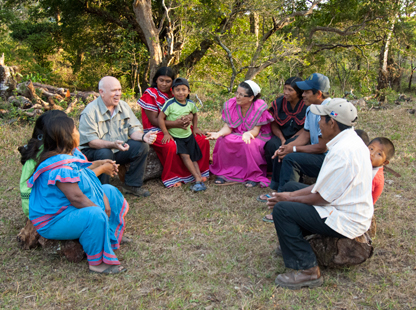What are the major differences or similarities between the ethos of the creation story or stories you are familiar with and the story King tells in The Truth About Stories ?
The creation story that I am most familiar with through my research and first-hand encounters with my religious relatives would be the Biblical/Islam story of Genesis and the Garden of Eden. When it comes to the style and “credibility” of the story compared to King’s Earth Diver story, I find that the elements share more in their qualities than they differ.
In Earth Diver story, Charm is depicted as an overly curious woman. Being impressed by the smallest things, and often questioning her environment. Charm seems to be very similar to Eve in the Garden of Even. It was Eve’s curiosity that persuaded her to listen to the snake, against God’s will, and break the single rule that was meant to not be broken — Eve’s curiosity lead to the theft of the Golden Apple (as I recall from my memory). It was this mistake that was her shortfall — the beginning of a series of cascading events that served as a punishment to her curiosity.
Likewise, on a pursuit of something to satisfy her relentless craving, Charm set on an adventure to find a Red Fern Foot (akin to the Golden Apple found in the Garden of Eve).
By now she was very hungry, and she was very keen on some Red Fern Foot, so she really got into the digging. And before long she had dug a rather deep hole. (King 13)
Indeed, just as Eve was met with a punishment for breaking the one rule, Charm found herself digging so deep to the point where she fell into the other side of the world.
And sure enough, she fell through. Right through that hole and into the sky. (King 15)
Another notable similarity between the two stories of creation is the fact that in both, there are animals (the snake in Genesis, the Fish in Earth Diver) that persuade the protagonist to the ultimate mistake.
These specific excerpts from both stories of Creation are an example of what I wrote about in a previous lesson. While there exist differences in the exact details of these stories, they tell the same story. This is why orality, particularly in cultures in which orality is primary, is very much important and no less inferior to literature. Ultimately, no matter the difference in the minute details of a story of creation, they are very much talking about the same thing. A different but shared perspective if you will.
Works Cited
Digital image. N.p., n.d. Web. <https://www.newstatesman.com/culture/books/2017/09/rise-and-fall-adam-and-eve-exploring-myth-original-sinners>.
King, Thomas. The Truth About Stories: A Native Narrative, House of Anansi Press Inc., 2003, Toronto.
“Two Sides of The Same Coin by D Awanis.” Hello Poetry. N.p., n.d. Web. 18 Apr. 2020.







